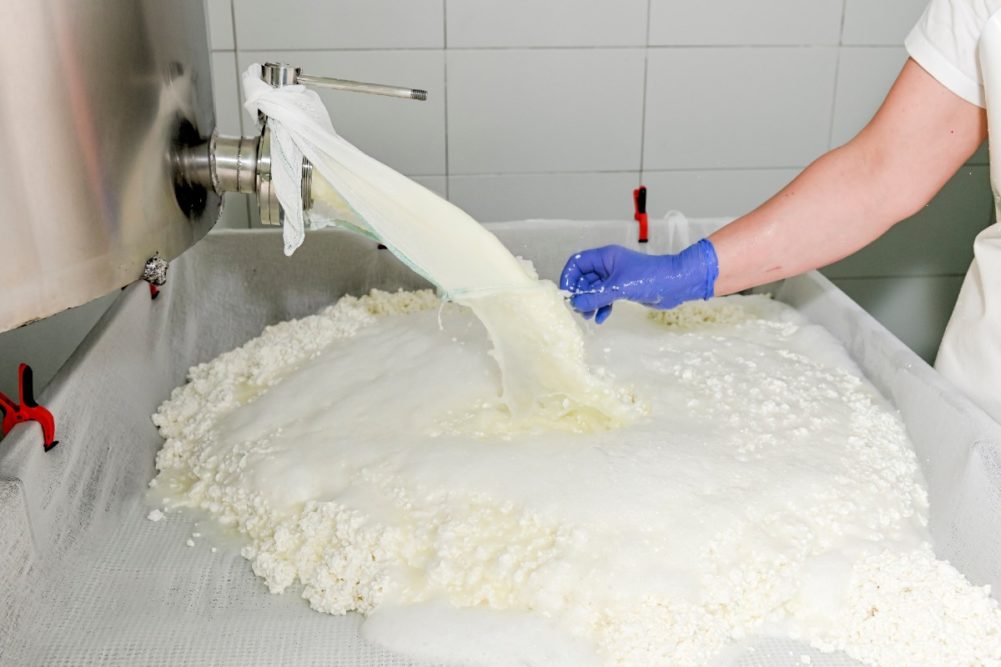Milk powder markets generally made their lows in mid-2023 and trended higher in the second half of the year, but the stories diverged during the first quarter of 2024.
The supply side was weak, with milk production running below the previous year, which was supportive for all of the milk powders, but the sides drew apart based on demand dynamics.
Bullish outlook
At a high level, the nonfat dry milk (NFDM) supply and demand looks bullish. Production of NFDM and its close relative, skim milk powder (SMP), was down 14.7% year-over-year (YoY) during the second half of 2023, while exports were only down 5%. That resulted in stocks being pulled lower and ended the year down 20.5%, which put them at the lowest level since 2015.
SMP production in Europe was also down for the year and it looks like inventories there were pulled lower, as well. So production and inventories in the Northern Hemisphere are down YoY and the market looks a little tight.
However, SMP production in New Zealand has ramped higher as Chinese demand for whole milk powder (WMP) remains weak and processors have had to shift their product mix to find other buyers for their milk products. On top of the increased New Zealand production, the demand side is soft.
Mexico is the biggest buyer of US NFDM and its imports slowed in the fourth quarter, and imports for the first quarter look to remain weak as it deals with increased domestic milk production and some cooling in demand.
China is the largest importer of dairy products and its import demand remains weak. Milk production in China has been running strong for the past three years, while consumer confidence and spending remain subdued. Signs point to the weak demand in China being driven by scarring from the intense and protracted COVID-19 lockdowns and now a softening housing market. It is hard to get bullish on Chinese demand until there is either evidence that its domestic milk production is declining or that consumer confidence has sustainably improved.
On top of the weak Mexican and Chinese purchases, demand from Southeast Asia has been patchy. Its imports were weak in Q3 last year, before they surged in Q4, and now they look like they cooled off again in early 2024. With NFDM/SMP prices falling during March, it appears Southeast Asian buyers will come back into the market, but the buying has seemed more price sensitive than it used to be. So the supply side in the Northern Hemisphere is running tight, but production is up in the Southern Hemisphere and demand is currently leaning spotty to weak, and that is keeping prices from rising.
Dry whey exports
Whey is the byproduct from making cheese. It can be dried to make dry whey, or the protein and other solids (mostly a sugar called lactose) can be separated and dried separately to produce whey protein concentrates (WPC), whey protein isolates (WPI), and dried lactose and dried permeate. Prices for all of these products rose during the second half of 2023 and into 2024, but dry whey prices were falling during March.
Dry whey exports have been weaker than expected and the higher prices have slowed domestic demand, which is leaving a little extra product looking for a home. Dry whey prices in Europe have been falling since mid-January, as good cheese demand in the region resulted in strong dry whey production. With EU prices running below US prices for nearly two months, European exporters have likely locked up more market share, which will continue to hamper US exports in the second quarter.
Demand for the high protein whey products, WPC and WPI, has been very strong. Both export and domestic sales are growing and inventories have been pulled down to low levels, which is keeping their prices firm. We’ve seen a few random loads of aged product or less desirable brands offered to the market in mid-March, but prices for most products look like they will be steady to higher during the second quarter.
The high WPC and WPI prices are going to slow down demand, which might soften the market in the second half of 2024. Prices could soften even further in the first half of 2025, as a number of new cheese plants and expansions of existing plants are expected to come online and most of those plants will be pushing whey into WPC/WPI. But that is still a long way into the future.
The dairy markets are volatile and market conditions can change quickly. If you are interested in trying to smooth out price movements, either as a buyer or a seller, always feel free to reach out and we can talk about ways to potentially hedge prices for the various powders.
Editor’s note: This material should be construed as market commentary, merely observing economic, political and/or market conditions, and not intended to refer to any particular trading strategy, promotional element or quality of service provided by the FCM Division of StoneX Financial Inc. (“SFI”) or StoneX Markets LLC (“SXM”). SFI and SXM are not responsible for any redistribution of this material by third parties, or any trading decisions taken by persons not intended to view this material. Information contained herein was obtained from sources believed to be reliable, but is not guaranteed as to its accuracy. Contact designated personnel from SFI or SXM for specific trading advice to meet your trading preferences. These materials represent the opinions and viewpoints of the author, and do not necessarily reflect the viewpoints and trading strategies employed by SFI or SXM.
– Nate Donnay is the Director of Dairy Market Insight at StoneX Financial Inc. and has been applying his expertise in large complicated systems and statistical analysis to the international and US dairy markets since 2005.

